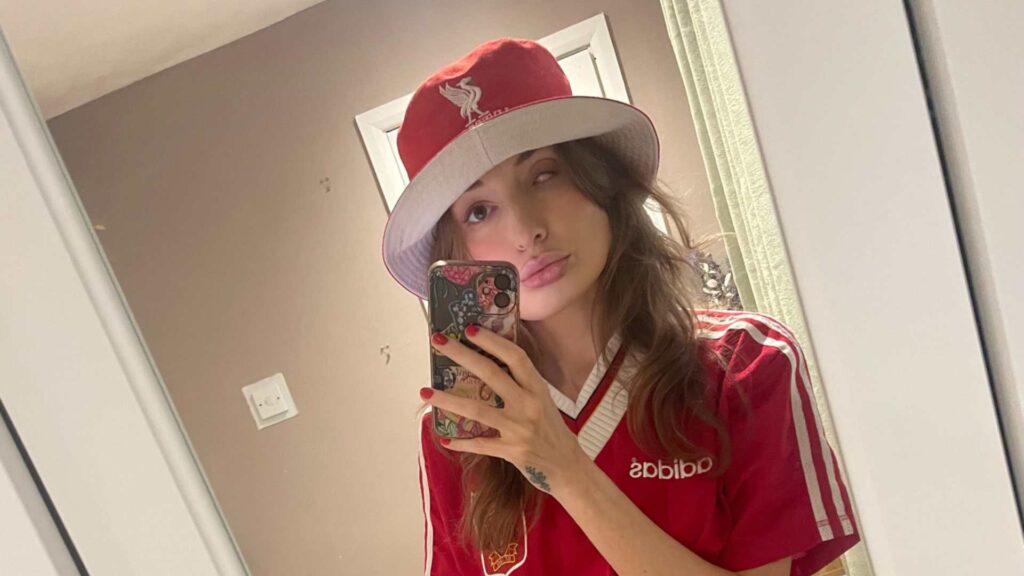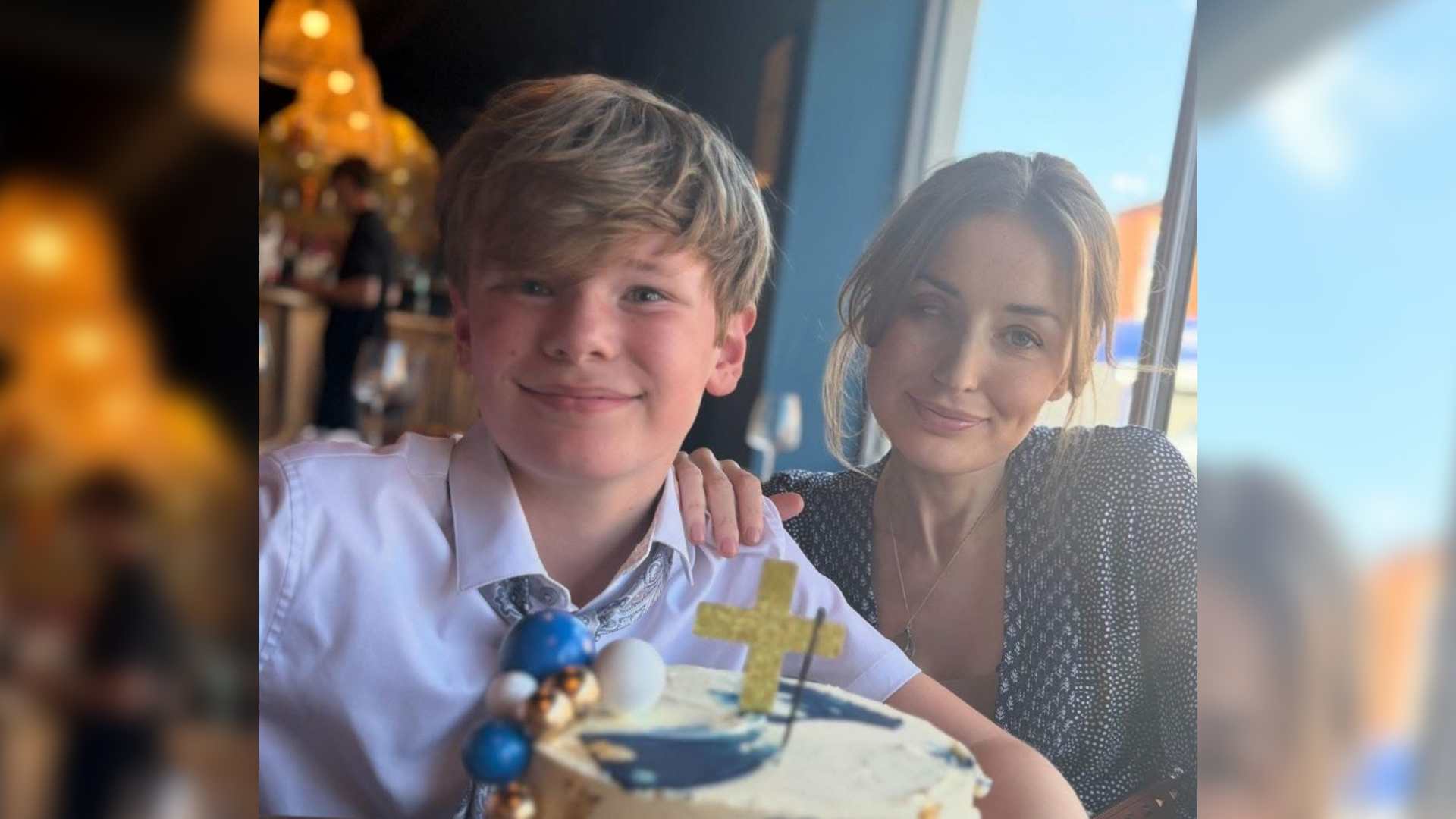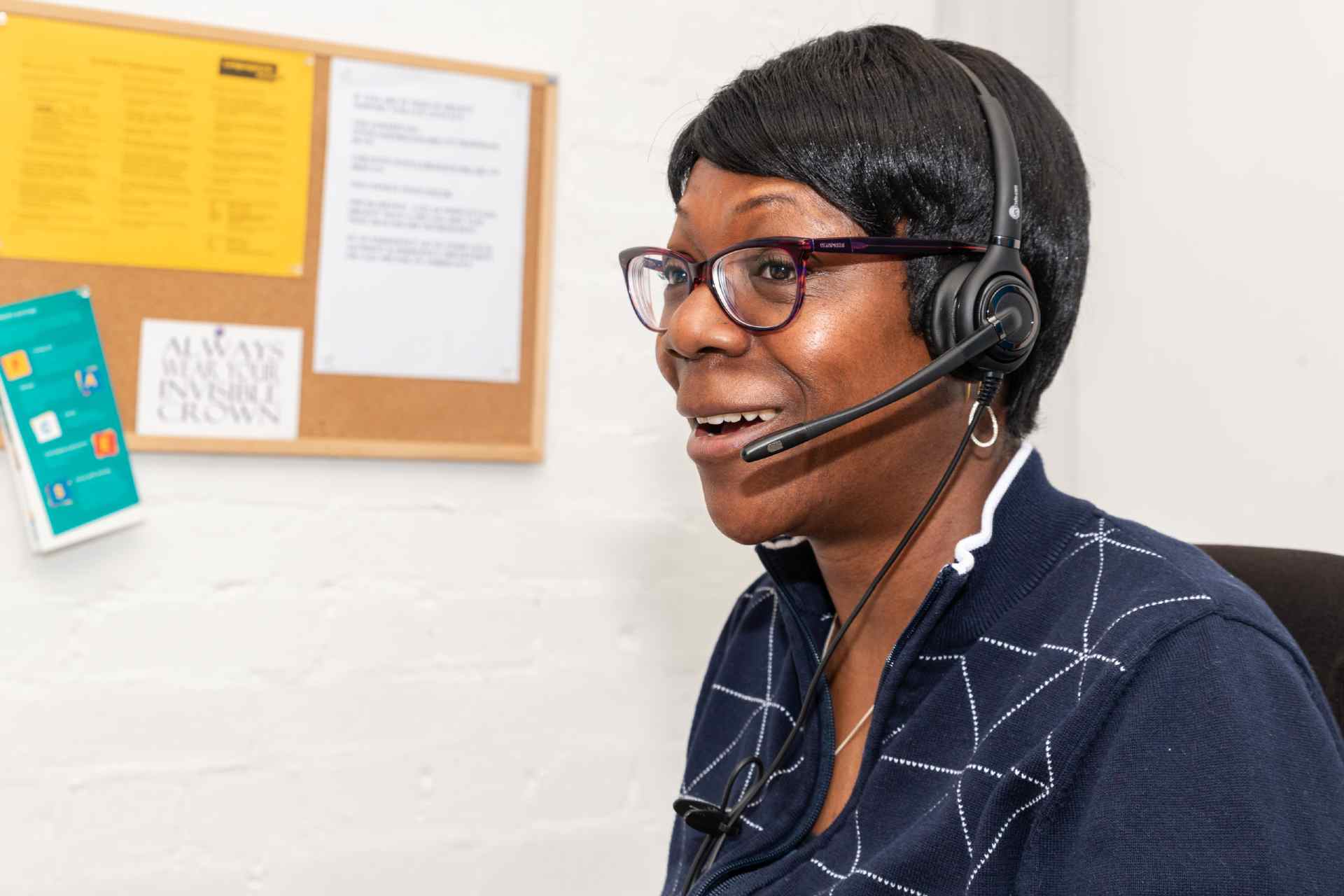When I lost my eye, my son was three years old, and like any young child, he was full of curiosity! He had known for a while that my eye was ‘poorly’, so I explained to him that ‘mummy had to get her poorly eye taken out, but even though I look different, I’m still your mummy.’
I was gentle with my approach to showing him my new appearance and he took it quite well. He enjoyed drawing pictures of me and crossing one eye out – I think this is how he was coming to terms with my appearance change. I didn’t want to make this a scary time for him, so I allowed him to ask questions and talk about it freely with family. I just wanted him to understand this is part of who I am now.
As he’s got older, I’ve prepared him for social situations – particularly amongst kids at school. I told him that sometimes people will stare or ask questions because they’re curious and he can say ‘that’s just how my mum looks’ or explain that I was poorly, whatever he is most comfortable with.
Teaching empathy and encouraging curiosity is important whilst also reminding children that different doesn’t mean less than.
Parents with a visible difference can get in our heads about how to have a conversation about our condition with our kids. It’s hard when you want to shelter them from the world, but compassion and honesty is the best way forward. Approaching the conversation in an age-appropriate way is important. Here are my top tips:
- Younger children don’t need to know medical terminology. It can be frightening enough as it is to hear as adults, so you don’t want to cause fear or confusion.
- Keep things matter of fact and avoid anything that may be interpreted as shame or something you want to hide.
- Let your child know that it’s a safe space to ask questions. Even if you don’t know the answer at the time, it’s a learning curve for both of you to go through together.
- If emotions come up, that’s fine. Keep the conversation open so that it can be revisited when needed, particularly as your child grows.
- If you’ve acquired a visible difference, let them know that you’re still the same parent. You may look different, but it hasn’t changed who you are and how much you love them.

Becky believes that it’s vital for children to learn about visible difference
Explaining visible differences to your child isn’t just for parents with visible differences. Talking about how some people are born with conditions and some people have surgery or accidents that lead to them looking different is an important way to grow empathy.
Emphasise that even if someone looks different, they’re still people and experience happiness, sadness, excitement etc. It’s also worth explaining that we are all different in some way. For example, some people wear glasses, some have scars, some use walking aids – differences are normal! What is important is that we treat everyone with respect.
If your child reacts negatively towards someone with a visible difference, use it as a teaching moment. I have been on the receiving end of this more than once. First and foremost, remember that the person your child is having a negative reaction to has feelings, and could be strongly impacted by the way this interaction plays out.
Acknowledge your child’s reaction, ‘I can see that you’re scared/surprised’ but reinforce that everyone should be treated with kindness. Ask how they would feel if someone made that comment about them or someone they loved. It’s important to gently guide a child in these situations as they can be uncomfortable for everyone. Teaching empathy and encouraging curiosity is important whilst also reminding children that different doesn’t mean less than. Your tone and reaction will shape theirs.
I am at a place now where I feel I can share my own experience and use it to educate others, which I hope will lead to greater understanding and compassion.
A lack of education around visible differences is very damaging. When growing up without learning about visible differences the default tends to be fear or even cruelty. This has an impact on those of us living with a visible difference – it can be painful and isolating. If people understood the emotional impact of their words, they might change their behaviour.
Curiosity in children is natural and should be encouraged but this must be guided with respect. Allowing a safe space for their questions creates empathy and enables children to grow into adults who can interact with kindness, hopefully resulting in a more inclusive world.
I am at a place now where I feel I can share my own experience and use it to educate others, which I hope will lead to greater understanding and compassion. However, it’s important to remember that not everyone is at the same point, and everyone has a right to privacy, particularly around something that can be a very personal experience and deeply emotional or traumatic.
If a person is not comfortable sharing their story with you or your child, this should be respected, and they should still be treated with dignity. It’s taken me a long time to get here, and it hasn’t been easy, but I hope I can use my experiences to support others through their own path whilst helping shift how people think about visible differences.

